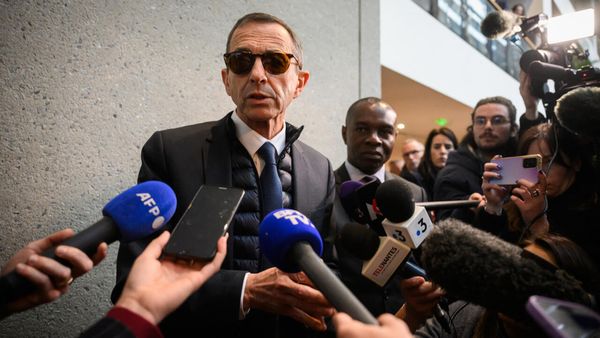
With the Dutchman clearly knowing that there was a lot to lose if he made a poor getaway for the second red-flag restart, he made sure to place his car in the most aggressive spot possible.
But as well as angling himself slightly towards the right to shut off rivals getting him down the inside, Verstappen also pulled incredibly far forward.
In fact, overhead footage of the Red Bull car and photos shot from trackside showed that his nose and wing were well beyond his grid box line and much further forward than his rivals.
While this positioning would appear to be similar to the infractions that Esteban Ocon and Fernando Alonso picked up in the first two races, the situation is in fact very different.
Going by the wording of F1's Sporting Regulations in relation to where drivers must line up, Verstappen was clearly okay as the matter revolves around the placement of tyres.
The rules regarding the grid boxes are covered in Article 48 of F1's Sporting Regulations and the key clause is element c) of this, which is what Ocon and Alonso fell foul of.
It states that an offence will be deemed to have taken place if: "any part of the contact patch of its front tyres (are) outside of the lines (front and sides) at the time of the start signal."

A closer inspection of Verstappen's wheels shows that while some of the front tyre was overhanging the line, the actual contact patch was never outside of the grid box.
This was therefore a case of Verstappen being absolutely on the limit with his positioning of the car to try to give himself as much of a head start as possible in the critical run to the first corner.
But with visibility so limited from the cockpit with the current generation of cars, it is hard to know how much of Verstappen's placement of his Red Bull was down to luck and how much down to judgement.
Speaking about the matter afterwards, Verstappen explained that he had pulled further forward after his initial stop because he felt he had more room – but never believed he had overstepped the mark.
"To be honest with you, I think I braked a bit late and then I lost my reference a bit," he said. "But then I looked and I was like: 'ah I still have a bit more space.' So I actually moved a bit forward.
"It was really on the limit. But on the limit is not over the limit! The sun was also quite difficult at the end. The visibility especially Turn 1, Turn 3 was quite tough."
It is also clear that, with the FIA having widened the grid boxes by 20 centimetres for this weekend's Australian Grand Prix, there is now increased scope for drivers to start angling their cars against their rivals in a bid to defend better.







